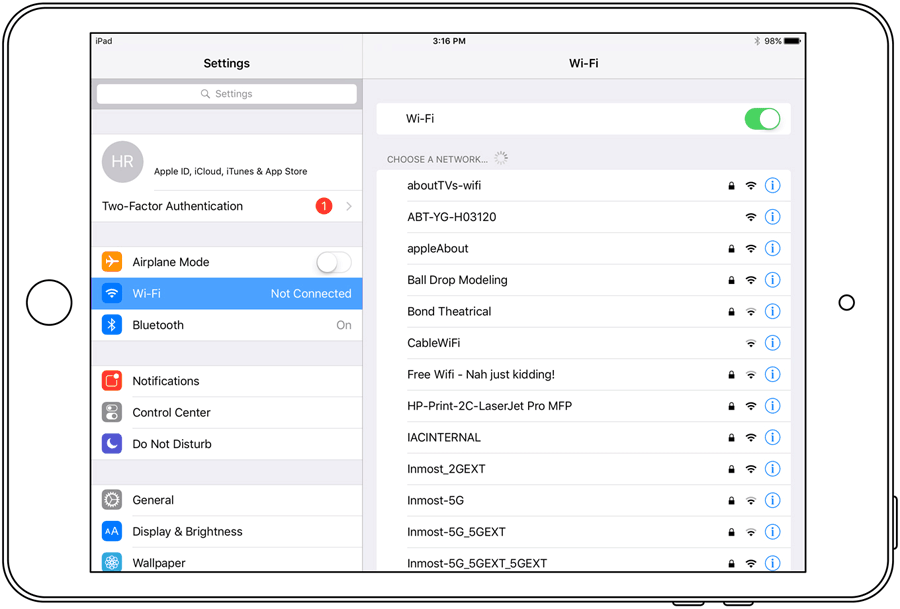A hard-wired internet connection offers many benefits over using WiFi. Best yet, we’ve made the process to install a wired internet connection easier than ever.
Follow these 5 simple steps to get set up in no time.
WiFi is found in almost every home now days, yet the radiation exposure is quite considerable. Along with cell phones, microwave ovens and wireless headphones – WiFi will be one of your largest exposures to radiofrequency radiation within the home.
On top of that, a WiFi router is usually left on 24 hrs a day, 7 days a week. Leading to a constant field of artificially pulsed RF radiation – penetrating your body day and night.
Benefits of hard wired internet
There are several benefits to a hard wired internet connection. Let’s take a look at them:
- No radiation exposure: RF radiation (from WiFi) is classified as a class 2B carcinogen. Dr Anthony Miller – a previous top advisor to the WHO stated that it’s “undeniably carcinogenic to humans”. Going wired removes this exposure entirely.
- It’s faster: A connection will always be faster over a wire than through the air. WiFi also faces many obstacles such as walls and objects. All of which can impede on the stability and speed of the connection.
- It’s more secure: A hard wired internet connection is far more secure than a wireless network. WiFi can be easily hacked by even a novice from outside your home.
Turning WiFi off at night is not enough
There’s many people recommending to just simply turn your modem off at night.
This is bad advice.
It’s equivalent to saying “I’m now going to smoke 2 packs of cigarettes instead of 4”. Whilst it’s a step in the right direction, this is simply not good enough.
RF radiation is a known carcinogen, so if you take your health seriously, you’ll be wanting to eliminate it completely.

Getting started with hard wired internet
A few things to understand and some tips before we begin:
- I may interchange using the words modem or router. I’m talking about the same thing.
- The closer you get to a router (with WiFi on), the higher the RF exposure. It’s best to limit your exposure during steps 2 – 3 of this guide.
- During step 3 you may need to get very close to the modem. Switch it off before doing so by pulling out the power cable from behind. This will prevent high RF exposures. Plug it back in once you’re done.
- When the modem is switched back on, it can take several minutes to be completely online. Look for the green lights.
Step 1: Purchase the cable
The first step is to buy an Ethernet cable long enough to reach your computer or device from the location of your modem.
I recommend a CAT6a or CAT7 Ethernet cable because they support higher speeds and are completely shielded.
This shielding helps prevent electric fields and high frequency voltage transients from emitting off the cable.
Your modem likely supports numerous wired connections, so feel free to purchase additional cables to go to different areas of the house.

Step 2: Keeping things neat
We don’t want cables going everywhere – they can be an ugly sight. So that’s why this step was included.
If you’re lucky like me, I have one computer and the cable was easily hidden behind furniture for the 5 meter distance.
I’ve been in homes where this may not be possible or there are many areas that require internet.
My advice is to try getting a cable that’s the same color as your walls / flooring.
You can then run it up against the edges of the room using some sort of adhesive to keep it there.
Using a wide tape the same color as your carpet to tape the cable along the floor in front of doorways and entrances works great too.
If you’re an owner and don’t want to see cables. Hire an electrician to install a wired network. This can be costly, but they’ll be able to run the cabling behind walls, in ceilings or underneath the home.
Get the electrician to install wall outlets where you require a connection. Always use the best cable when doing so to future-proof the home.
Step 3: Turn the WiFi OFF
If your modem has a WiFi button on it, simply push it to turn the WiFi off. There should be a light to tell you that indeed it’s now off.
There should now be no RF radiation being emitted from the router. Well done! You can skip to the next step.
Don’t have a WiFi on/off button on your router? There’s a few extra steps to take:
- Turn the modem off.
- Now take a look on the sides or bottom for a label with a username and password. Write these down – you’ll need them.
- If you can’t find them, look in the manual or box that the modem came in. If you still can’t find them, contact your internet service provider (ISP) for help.
- Once you know your routers username and password, we’ll now need to find its IP address. Make sure your router is powered back on.
- You might need to wait a few minutes for the router to power up. Get onto a Windows or Mac computer.
- At this point, make sure you’re connected via WiFi to the internet. Check a website to confirm you’re connected.
- On Windows: Search for ‘command prompt‘ within the Windows search box. You should see a black box. Type in ipconfig and look for the wireless adapter section, look to the default gateway address, then copy and paste this IP (numbers with dots) into your web browsers address bar (firefox, chrome etc). Go to step 9.
- On Mac: Watch this video to find your routers IP address.
- Now you should have the IP address in your browser and be presented with a login screen. If you don’t see this, you’ve entered the wrong IP. Type in the routers username and password to get access.
- Now you’re within the router settings. Look around for the WiFi On/Off setting and switch it OFF. You might have to look through a few different sections for it. Don’t forget to save this setting, and your WiFi should now be off – along with the radiation.
- If you have any trouble with these steps or getting your WiFi switched off please contact your ISP (Internet Service Provider) for help.

Step 4: Make the connection
Now to get your internet connection back. Connect the Ethernet cable from your modem into your device/computer.
Computers usually have an Ethernet slot ready to plug straight into.
Other devices (phones, tablets etc.) will likely require an adapter to go from its charging port to the Ethernet cable. Yes, you can hard-wire tablets – even phones!
If using Apple products, always purchase the official adapters from Apple, otherwise you may find they don’t work.
Step 5: Turn WiFi off on your device.
Well done, you now have a wired connection direct to your modem! There’s just one very important final step that’s often missed. That’s to turn the WiFi OFF on your computer or device.
On Windows at the bottom right, find the network icon near the clock and click it. Turn the WiFi and Bluetooth off.
On Mac up the top right of the screen, find the WiFi / network icon. Select it and turn the WiFi and Bluetooth off.
If you see it, I recommend to also turn airplane mode ON.
For other devices, go to your settings to find the WiFi and Bluetooth icons – turn them OFF. Also turn airplane mode ON.

How to protect yourself further from EMFs
This completes all the steps required to get your hard wired internet set up. You’ve just eliminated a massive exposure of microwave (RF) radiation from your life.
However, what if you want to further protect yourself from EMFs? Especially since more and more studies are showing their adverse health effects.
EMFs from WiFi is just one RF exposure of dozens found within the home. Then on top of that, there are 3 more types of EMFs that can cause adverse health effects. All of these are found within the home.
You can learn more about the different types of EMFs, the scams to avoid and how to get protected – get a free copy of my book ‘The Secrets of EMFs Exposed‘.
This article was originally written on March 19th, 2019

About the Author
Matt Cossey is a certified electromagnetic radiation specialist from Australia. He’s helped protect thousands world-wide from non-native EMFs.



